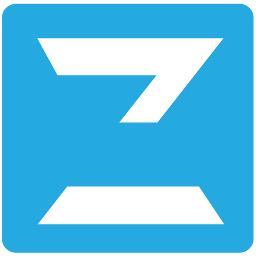Digital Out Of Home is rapidly growing due to decrease in hardware costs, an increase in connectivity and the advancements happening on the Digital Signage Software. More than anything, big brands started embracing Digital Signage as a medium for marketing. The future seems extremely bright for DOOH, particularly in a few hot segments.

5 Hot Segments that seem to have a huge potential in developing countries:
- DOOH in Health Care: Digital screens placed in hospitals and clinics not only attract a lot of eyeballs but also the viewing time is pretty high. The average waiting time in most well-known hospitals in India is around 60 minutes. This means a very high level of interaction can be made with humans during the attention spans. Hospital is a place where one thinks about health. DOOH operators can capitalize on this opportunity by showing useful content that will benefit the user and keep him engaged during the waiting period. Eg: A display in dental clinics can show animated videos of the common dental issues and remedies for the same. This way the viewer’s mind is activated and when an Ad, if pushed in between informative videos, will definitely capture attention. The success of DOOH in Health Care depends on how beneficial and engaging, the content is, which forms the core to attract the audience to the Ads. Too many ads will spoil the user experience. Since the average waiting time is high, Ads can be pushed once in 5 minutes.
- DOOH in Malls: DOOH in malls is all about fast-moving customers. Viewers have a very limited time, hence the displays showcase just Ads in the best form. In developing countries like India, Philippines, Malaysia etc, most urban population spend their weekends inside a mall doing activities ranging from shopping to ice-skating to watching movies. Hence, signages inside malls capture a lot of eyeballs and the audience are also closer to the buying point. This is an attractive segment as long as the permission to put displays inside malls comes at a reasonable price. Business Model with the mall receiving a percentage share on the advertising revenue is always a safer bet.
- DOOH in Transportation: Transportation sector is huge and digital screens can be placed in moving medium like buses, cabs, and trains or hubs like bus stations, railway stations, airports etc. Hubs are chosen because of the number of eyeballs it can attract and moving medium is chosen for greater attention spans. Brands looking for a specific action choose moving medium over hubs. Brands interest for DOOH in hubs is significantly higher as the motto of branding is addressed. Hubs like railway stations or metro stations attract high footfalls on a daily basis and no segment can match this kind of footfalls. Brands are willing to showcase their Ads in this sector and the faster a DOOH expands its display network in this medium, the greater are the benefits.
- DOOH in Grocery Stores: Grocery stores are real-world places where a customer is closest to the purchasing decision and nudging him at the right moment will result in a sale. Several FMCG brands love to utilize the DOOH networks in Grocery stores as this is one segment where the sales data is captured through POS and the brand can validate if the signage resulted in an increase in sales. And once advertisers see a rise in sales due to the utilization of digital signages at purchase points, they will become loyal customers to the DOOH network operators. DOOH in grocery stores serves the purpose of both branding and influencing purchase decision at the right point.
- DOOH in Residential spaces: Residential places are locations where the user is usually relaxed and watches the signages as it displays information related to the housing society. DOOH players in this segment divide screens into two parts, one for Ads and the other for information content. The displays usually show information related to the housing society along with Ads. This is not still a well-explored segment but seems to have a good amount of interest from advertisers.
Anyone who intends to start a DOOH network needs to evaluate multiple parameters like availability, competition, relevance in a particular geography, brand interest etc before selecting one of the above DOOH segments.
One minor segment that has a very good ROI is DOOH in Liquor Stores: Alcohol as a product has limited avenues for marketing due to the restrictions imposed by governments in different geographical areas. One common place where advertising of liquor is permissible to an extent is (across the globe is) inside the liquor store. Very few stores have any signage inside and most brands are spending huge amounts of money even for a standee space inside a liquor store, generally used for branding. Digital Signage placed in the right locations in liquor stores can attract audience to a particular brand. DOOH players need to pounce on this opportunity as this a segment which will be ripe and is not much explored compared to other DOOH segments. ROI is also higher and breakeven time is lower. However, the biggest challenge is to get space in a Liquor store on a rental basis at a reasonable price or through a revenue-sharing model. This can be implemented in very few states due to the local rules but wherever possible the returns are high.
There are very few companies focused on offering CMS solutions considering the unique needs of DOOH operators. Zeetaminds is one among the few according to the customer feedback on Capterra. Feel free to try it on any number of displays for free for a month to evaluate if it is the right fit or not.

Leave a Reply